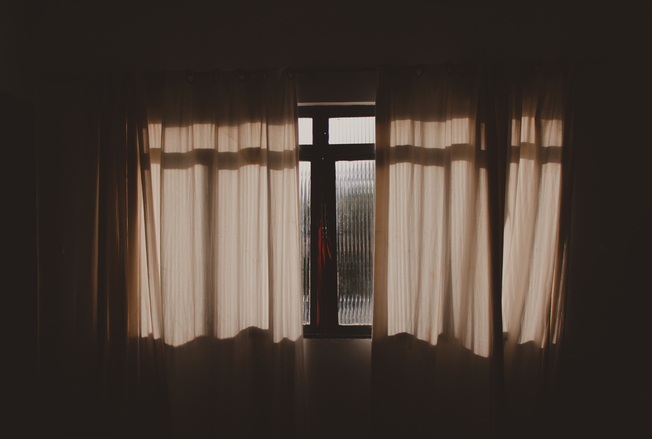
What is the Best Way to Pack Clothes for a Move?
May 24, 2024
As you evaluate and take inventory of all your clothes, you may find yourself surprised at the sheer quantity of your wardrobe. Even if you’re someone who keeps a trim closet, it’s still one of the packing umbrellas that takes up the most space in the moving van. And while clothing doesn’t seem like it should be too hard to move — you can leave the bubble wrap and packing paper behind — owning bulky items, lots of unique pieces, or having a big closet can make it trickier than it looks. But if there’s anyone who’s familiar with the ins and outs of moving all different types of clothing, it’s Boston Seaport’s Injeanius owner Alison Barnard O’Brien, Boston’s “Queen of Jeans” who has been handling garments since her grand opening in the city’s North End in 2005.
Here are some of her tried-and-true packing tips for packing clothes that will help make your move as close to wrinkle-free as it can be.
Keep hanging clothes hanging and folded clothes folded.
O’Brien’s number one stress-free packing method is to leave hanging clothes hanging and folded clothes folded. “It makes it so much easier for you to then put that in your new closet,” she says. When she has brought her garments to pop-ups and peoples’ homes, she turns a large garbage bag upside down, cutting a hole for the hangers to poke through the top, and drapes the garbage bag over the garments. Then, she ties a knot in the bottom of the bag. (You could also use packing tape to seal it shut.) “It catches anything that might fall off the hanger and then it protects the clothes from anything in the transfer,” she says. Not only is it an efficient way to speed up the packing process, but it also helps prevent wrinkles and keep pieces in good condition. If you have them, you can use garment bags instead.
If your dresser drawers can stack easily on top of one another, she says you can simply remove the drawers with the non-hanging clothes still folded inside and move them that way.
Another moving tip: Group similar items together to make unpacking easier.
Almost any vessel will do for packing.
If you do have to remove your clothing items from your drawers (for example, if your old closet’s drawers were built-in), O’Brien says that where you choose to pack them is up to you. If you want to use your suitcases or duffel bags instead of leaving them empty for the move, that’s always an efficient solution. Alternatively, especially if your wardrobe is flush with expensive items or fragile items, you can invest in wardrobe boxes sold by professional moving companies. Otherwise, regular moving boxes, bins, and storage bags work. Empty extra shoe boxes (if you aren’t using them to pack shoes) can store t-shirts, scarves, undergarments, and other lighter items in a pinch. Just avoid baskets and other materials that can snag and tear clothing.
Keep an eye on your delicate items.
If you have a cashmere sweater, fur coat, leather jacket, silk dress, or other expensive item of clothing that you’re worried about in your move, O’Brien recommends a simple solution: Keep tabs on it. “I think if you are concerned with something expensive, you just always have to keep it in your sights,” she says. “Don’t bury it.” Additionally, she recommends wrapping it up in a water-proof material like a trash bag or plastic wrap — you might consider labeling one special bag of coveted garments and packing it in a special, protected place. For example, if you’re driving separately from your moving truck, consider keeping your “valuables” in the car with you.
Store your clothing based on what material it’s made of.
When it comes to durable and heavier items like denim, sweatshirts, and cotton tees, O’Brien says not to worry too much about the way you pack them. At Injeanius, all garments initially come in a cardboard box laid completely flat, but jeans are stored and displayed in myriad ways — folded, hanging, and laid out — due to the fabric’s resilience. Other materials won’t be so low maintenance. Namely, silk and satin. “I’ve noticed with some of my satiny button downs or pants that they will just always have a crease no matter what,” O’Brien says. When it comes to packing a silk or satin garment: “It’s going to end up being a ball of wrinkles.” That’s where, she says, steaming as you unpack (or as you remove garments for wearing) comes in handy.
Optimize and organize your closet as you unpack.
When you unpack and move in to your new home, O’Brien says to take advantage of the chance you have to start over and declutter. “When you’re unpacking, use it as an opportunity to set yourself up for an organized life,” she says. “You get to organize things the way that you want them, in the way that’s most efficient for you.” For her clothes that aren’t hanging, O’Brien uses the Marie Kondo konmari folding method so that she can see everything in her drawers. That way you don’t have to dig around and you’ll always be able to see what you have to choose from.
Try an anti-moth hack to keep your garments safe.
O’Brien says you can even take your closet optimization a step further with cedar wood chips and lavender. “Lavender is a natural repellent for moths,” she says, so if you place at least one sachet of lavender in your closet, it will help minimize holes in your sweaters. The same goes for cedar chips. “Not everyone can have a cedar closet,” says O’Brien. For more advice on saving your sweaters, click read our full guide on preventing and getting rid of moths.
For more packing hacks, check out the rest of our series on packing advice from local experts. Learn how to pack like a pro, whether you’re moving plants, books, or more.
Top cities
Atlanta Apartments
1,999 apartments starting at $600/month
Austin Apartments
4,949 apartments starting at $600/month
Baltimore Apartments
1,472 apartments starting at $500/month
Boston Apartments
3,499 apartments starting at $940/month
Charlotte Apartments
2,903 apartments starting at $450/month
Chicago Apartments
4,012 apartments starting at $450/month
Dallas Apartments
5,609 apartments starting at $604/month
Fort Worth Apartments
2,193 apartments starting at $600/month
Houston Apartments
4,504 apartments starting at $590/month
Las Vegas Apartments
1,081 apartments starting at $704/month
Los Angeles Apartments
11,535 apartments starting at $625/month
Miami Apartments
544 apartments starting at $1,000/month
Milwaukee Apartments
928 apartments starting at $465/month
New York Apartments
4,118 apartments starting at $488/month
Oakland Apartments
608 apartments starting at $885/month
Orlando Apartments
842 apartments starting at $825/month
Philadelphia Apartments
3,657 apartments starting at $550/month
Phoenix Apartments
4,153 apartments starting at $599/month
Pittsburgh Apartments
1,223 apartments starting at $600/month
Portland Apartments
2,519 apartments starting at $599/month
Raleigh Apartments
1,367 apartments starting at $750/month
San Antonio Apartments
3,925 apartments starting at $525/month
San Diego Apartments
2,960 apartments starting at $650/month
San Francisco Apartments
436 apartments starting at $675/month
San Jose Apartments
405 apartments starting at $1,300/month
Seattle Apartments
3,623 apartments starting at $450/month
Tampa Apartments
1,078 apartments starting at $800/month
Washington DC Apartments
2,878 apartments starting at $745/month


